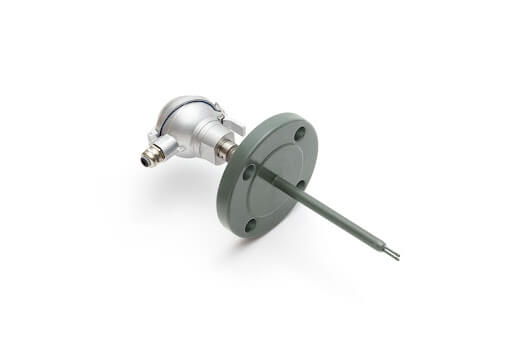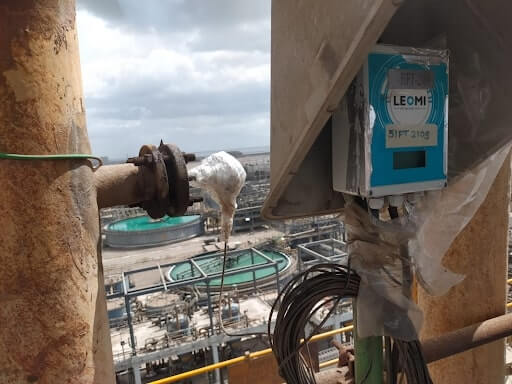
Problem
To produce commercial grade 30% to 37% Hydrochloric acid use of HCL Synthesis unit having 2000⁰C Top fired Combustion chamber made from impervious graphite (steel jacketed) process Hydrogen & Chlorine.
Unabsorbed HCL will then be taken to the Tail gas tower (TGT) for better absorption of all HCL traces & remaining gas is vented. Customer was facing a challenge to install a flowmeter for Vent gas having HCL trace gas (<5ppmv) & water vapor at very low velocity where NO solution is available.
After studying thoroughly our expert proposes a customized flow solution with HALAR Coated sensor probe which can work well as wetted parts.
Solution
Leomi – 586 Insertion Thermal Mass flowmeter:
- Can handle corrosive gas environments with long life.
- Senses very low-velocity upto 0.2 m/s make this application easy.
- High turn-down ratio of 100:1 ensures high rangeability.
- No pressure drop
- Works well even in high water vapors & moisture
Application
Vent process gas flow measurement in Chemical Industry
Customer
Highly Reputed Chemical plant, Gujarat
Product
Why Leomi?
- An ISO 9001:2015 company, Startup India recognized
- German technical collaboration Engineered in India
- India’s First In-house fully automatic wind tunnel calibration system
- Product quality proven for more than 20 years installed worldwide.
Installation Facts
Leomi 586 is installed in the Vent gas in Tail gas Tower in different duct sizes from 6” (DN150) pipe to 16”(DN400) with flow rates ranges. Working well even in corrosive gas with high moisture conditions and at very low flow rates with excellent repeatability since May’2021 at customer site.


Download the Complete Case Study





